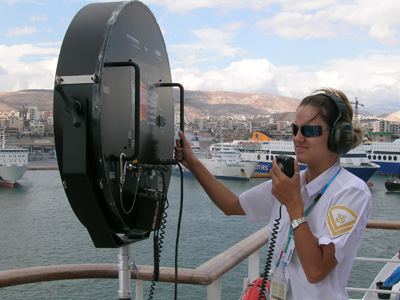recent pirate attack […] was apparently rebuffed by the use of sonic weapons
By Chiu Longina • Mar 9th, 2008 • Category: DISPOSITIVOS
From http://www.forteantimes.com/
http://www.forteantimes.com/features/commentary/110/sonic_weapons.html
Sonic Weapons
A recent pirate attack on a luxury liner was apparently rebuffed by the use of sonic weapons. Jack Sargeant re-examines the sound and the fury of modern warfare.
Text: Jack Sargeant
Images: American Technology Corporation
January 2006
Literal:
Perhaps it’s because Somalia has had no real government for the last 15-years that its Indian Ocean coast has become one of the most dangerous shipping areas in the world. More than 25 ships have been hijacked in these waters in 2005, including a UN-chartered aid vessel bound for Somalia.
Although shipping is normally considered safer when far away from land, on Saturday 5 November 2005 the Seabourne Spirit, a luxury cruise ship, was attacked in the early hours of the morning while travelling 100 miles (160km) from the East African coast. The pirates fired at least one rocket-propelled grenade that hit the cruise ship, although there were no fatalities. While the passengers were hustled half-asleep into the restaurant in the centre of the ship and the vessel began to outmanœuvre the pirates, the crew defended the liner with a Long Range Acoustic Device (LRAD), a non-lethal sonic weapon.
Costing £17,200, with a diameter of 84cm (33in) and a weight of only 24kg (53lb), the LRAD consists of a dish that can generate a frequency of between 2100 – 3100htz at 150dbls; in contrast, the engines of Concorde were measured at a mere 110dbls. The device focuses this sound wave into a beam of between 15° and 30° that is effective for 300 metres (985ft). Although such volumes could physically damage the target’s hearing, the high pitch frequency, intensity and volume of the sound physically compel the target to leave the vicinity. The sound drives people away.
The LRAD was devised to protect American Navy vessels following the terrorist bombing of the USS Cole in 2000. Manufactured by the American Technology Corporation, whose website describes the LRAD as “The Sound of Force Protection”, the device is designed to allow clear verbal communication over a large distance and above other noise. In addition, the company boasts that the LRAD can also produce an “attention-getting and highly irritating warning tone for behaviour modification”. 1 In other words, it can generate an exceptionally loud and unpleasant sound that will stop somebody in their tracks and make them want to get the hell out of the area.
The company notes that the LRAD can be used for riot and crowd control and psychological operations, amongst other functions. The device has reportedly been deployed at the mouth of the Tigris River in Iraq, as well as on the streets of Fallujah and Baghdad, where it has been used in crowd dispersal. It has also been used for crowd control in post-Katrina New Orleans, and was alleged to have been ready for deployment – should it have been deemed necessary – at the Republican Party conference in New York in 2004.
If the LRAD is an example of advanced non-lethal sonic weapons technology, then an altogether more primitive form of sonic warfare has also been documented in the Gaza Strip. Recent reports describe Israeli aircraft breaking the sound barrier while flying low over Palestinian homes late at night, sometimes every hour; the resounding sonic booms certainly result in poor sleep and anxiety attacks, but they have also been described by the Palestinian Health Ministry as causing nose bleeds and miscarriages.
Sound is currently being used as a form of deterrent and control by the military and security services in warfare, on the battlefield and in alleged danger zones, but its use closer to home appears to be imminent. Merthyr Tydfil-based company Compound Security Service have recently developed the ‘Mosquito’, a device that produces an irritating high frequency tone which is inaudible to most adults (who by their early twenties have already suffered some hearing loss), but designed to deter gangs of teens from congregating and causing trouble in (or outside) shops. CSS also notes that the device has a Pavlovian effect: after being unwittingly exposed to the noise in a specific locale, youths tend to avoid hanging around there again. Costing £580, the Mosquito has an effective range of between 15 and 20 metres (50–65ft) and has already been sold to shops and councils in Britain.
The more successful non-lethal military technologies prove to be in confrontational situations, the more chance there is that these devices will find civilian application. With the introduction of the Mosquito it would appear that sonic control devices designed to modify behaviour will join CCTV cameras as commonplace on the high street.

Chiu Longina is
Email this author | All posts by Chiu Longina




